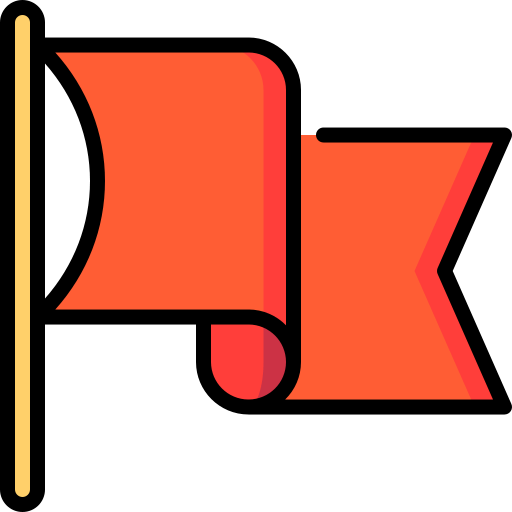Flag of Sweden
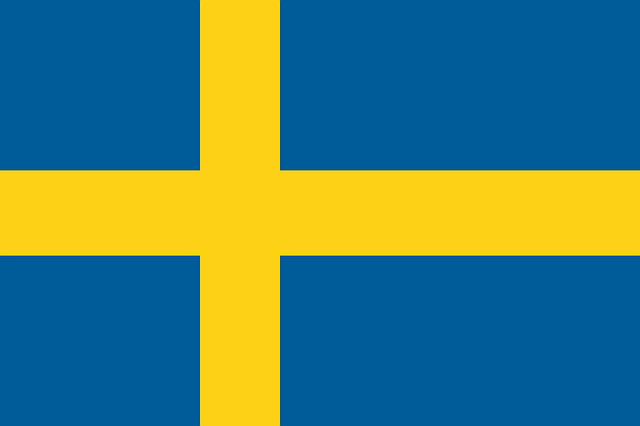
Swedish flag
- Official approval of the flag: 1906 year
- Flag emoji: 🇸🇪
- Period: Modern flags
- Type of flag: Flags of countries • Flags of continental countries
- Belonging to the continent: Europe
- Colors on the flag: yellow • blue
- Emblem on the flag: Without emblem
Sweden is located in Northern Europe, on the Scandinavian Peninsula, bordering Norway and Finland, and is washed by the Baltic Sea to the east. The capital is Stockholm. The country covers 450,295 km² and has a population of about 10 million people. The official language is Swedish, but English is widely used as a second language. Sweden is a constitutional monarchy and has a high level of social security. The main ethnic group is Swedes, with minorities of Finns and Sami.

The flag of Sweden, known as the “blue flag with a golden cross”, is the official symbol of the Kingdom of Sweden. Its design is based on the Scandinavian cross, symbolizing Christianity, and has a long history associated with the country’s national identity and cultural traditions.
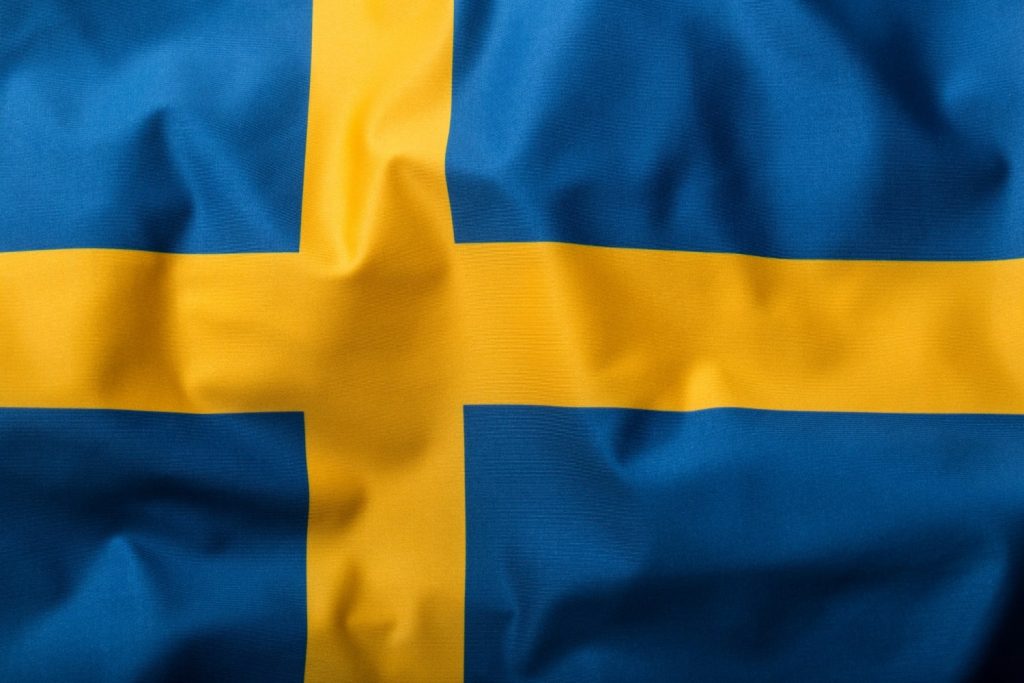
History of the Swedish flag
The history of the Swedish flag dates back to the Middle Ages, when cross symbols were actively used in the heraldry of the Scandinavian countries.
The origin of the flag
- XII-XIII centuries: The first mention of a yellow cross on a blue field appears in the coats of arms of the Swedish kings. This design may have been inspired by the Danish flag (Danebrog), one of the oldest flags in the world.
- XVI century: King Gustav I Vasa made a golden cross on a blue background the official symbol of the Swedish kingdom. According to legend, this design emerged after the king saw the golden glow of the cross in the blue sky.
- 1620: The Swedish flag was used as the official naval symbol and later as the national flag.
Modern times.
The modern Swedish flag was approved in 1906. Its design and colors have remained unchanged for over a century, emphasizing the stability and continuity of Swedish traditions.
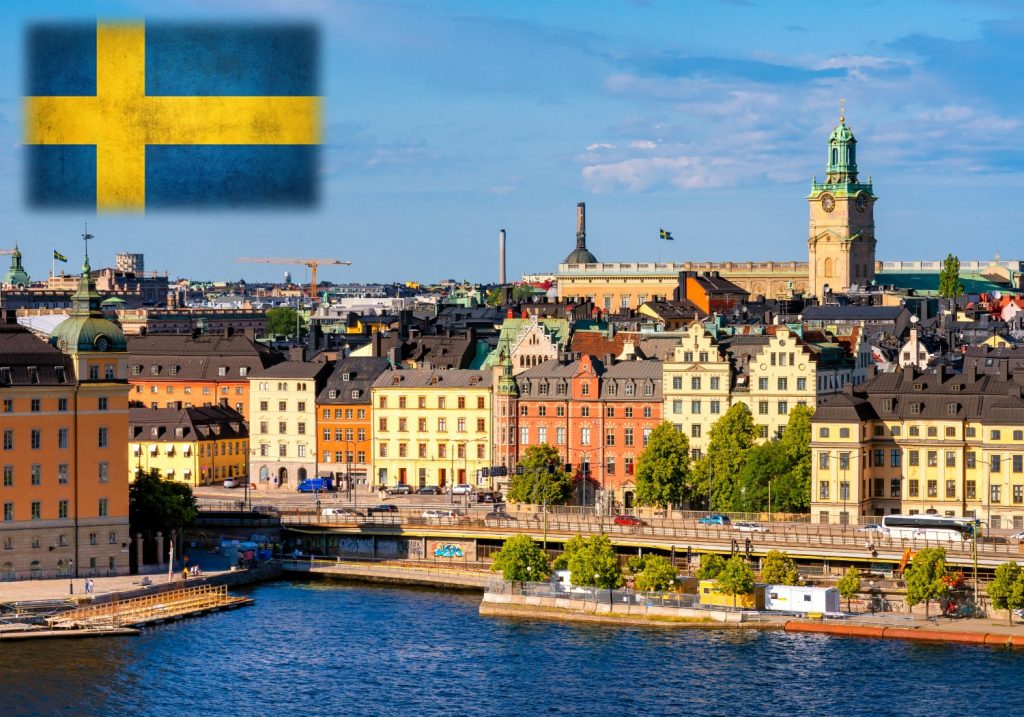
Colors of the Swedish flag
Meaning of the colors
The Swedish flag has a simple but symbolic design:
- A golden cross:
- Symbolizes the Christian traditions of Sweden.
- It represents light, nobility and unity.
- Blue background:
- It is associated with the purity of the sky and the waters of the Baltic Sea.
- It symbolizes loyalty, justice and peace.
The combination of these colors creates a unique symbol that reflects the natural beauty and spiritual values of the country.
Color codes
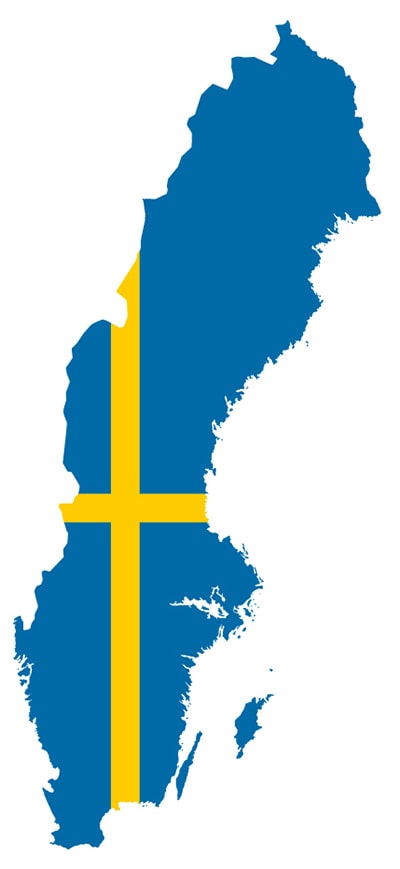
To ensure the accuracy of the flag, its colors are officially approved in different systems:
- Blue:
- RGB: (0, 106, 167)
- HEX: #006AA7
- CMYK: (100, 37, 0, 35)
- Pantone: 301 C
- Golden (yellow):
- RGB: (254, 204, 0)
- HEX: #FECC00
- CMYK: (0, 20, 100, 0)
- Pantone: 116 C
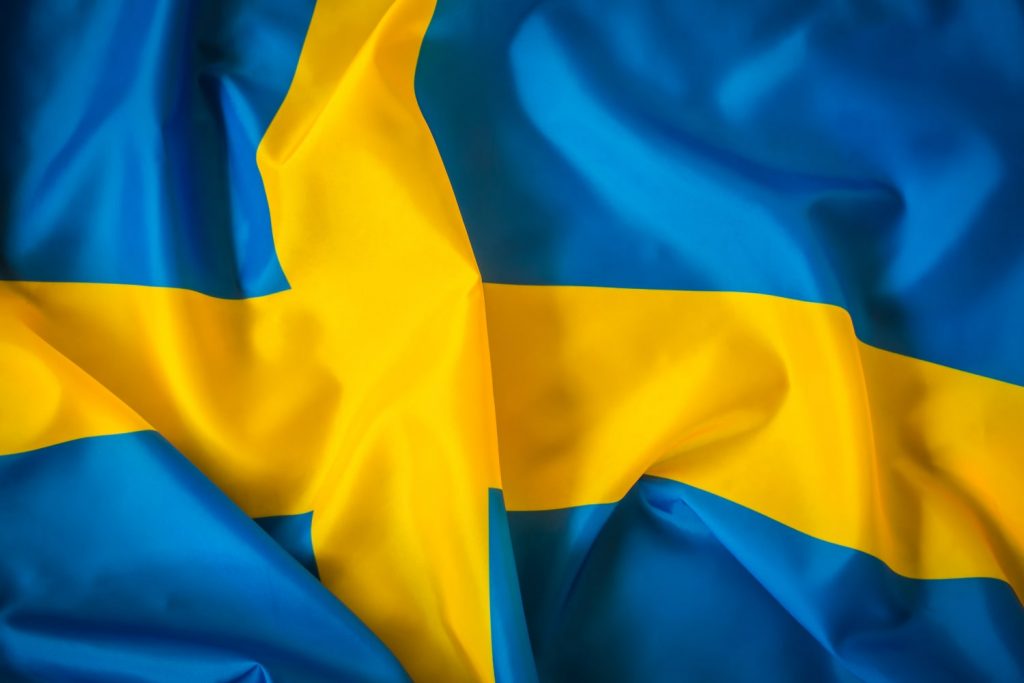
Format and proportions
The flag of Sweden has a traditional Scandinavian design with a horizontal cross placed closer to the pole.
Flag proportions
The official proportions of the flag are 5:8. The length of the cross is equal to the width of the flag, and the ratio of the cross width to the flag height is 5:16.
Design features
- The cross is shifted to the left, closer to the pole, which is a characteristic feature of Scandinavian flags.
- The blue and yellow colors should be saturated and meet official standards.
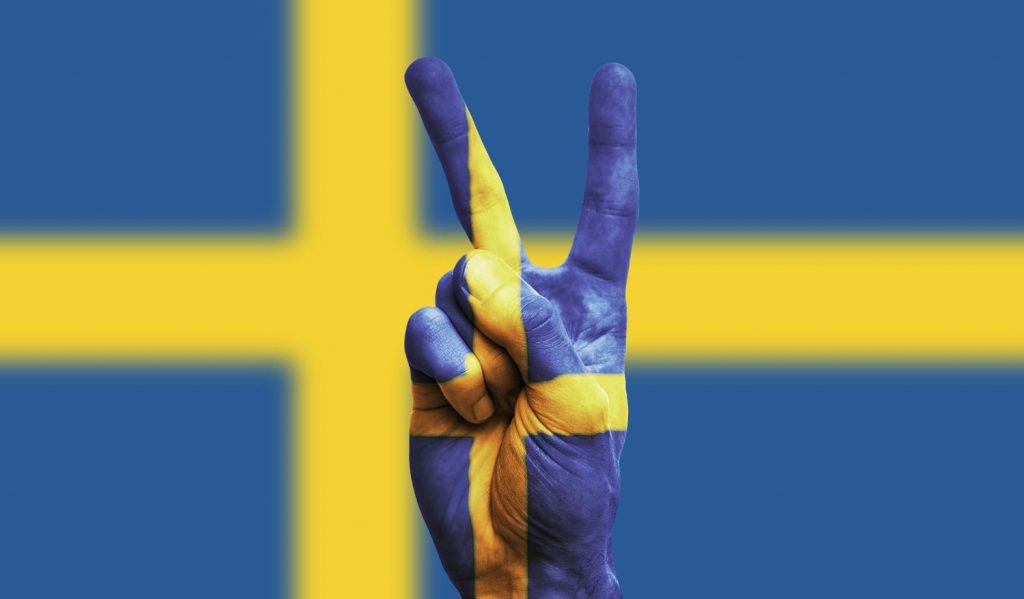
Interesting facts about the Swedish flag
- The Swedish flag belongs to the group of Scandinavian flags that have a similar design to the cross (flags of Denmark, Norway, Finland, Iceland).
- The Swedish Flag Day is celebrated on June 6, which is also the Swedish National Day.
- The flag of Sweden is often associated with the country’s natural resources, including its many lakes and forests, which inspired the choice of colors.
The Swedish flag is a symbol of national pride, heritage and unity. Its simplicity and vibrant colors emphasize the country’s natural beauty and its commitment to tradition and values. Today it flies proudly over government buildings and is a recognizable symbol of Sweden on the international stage.
